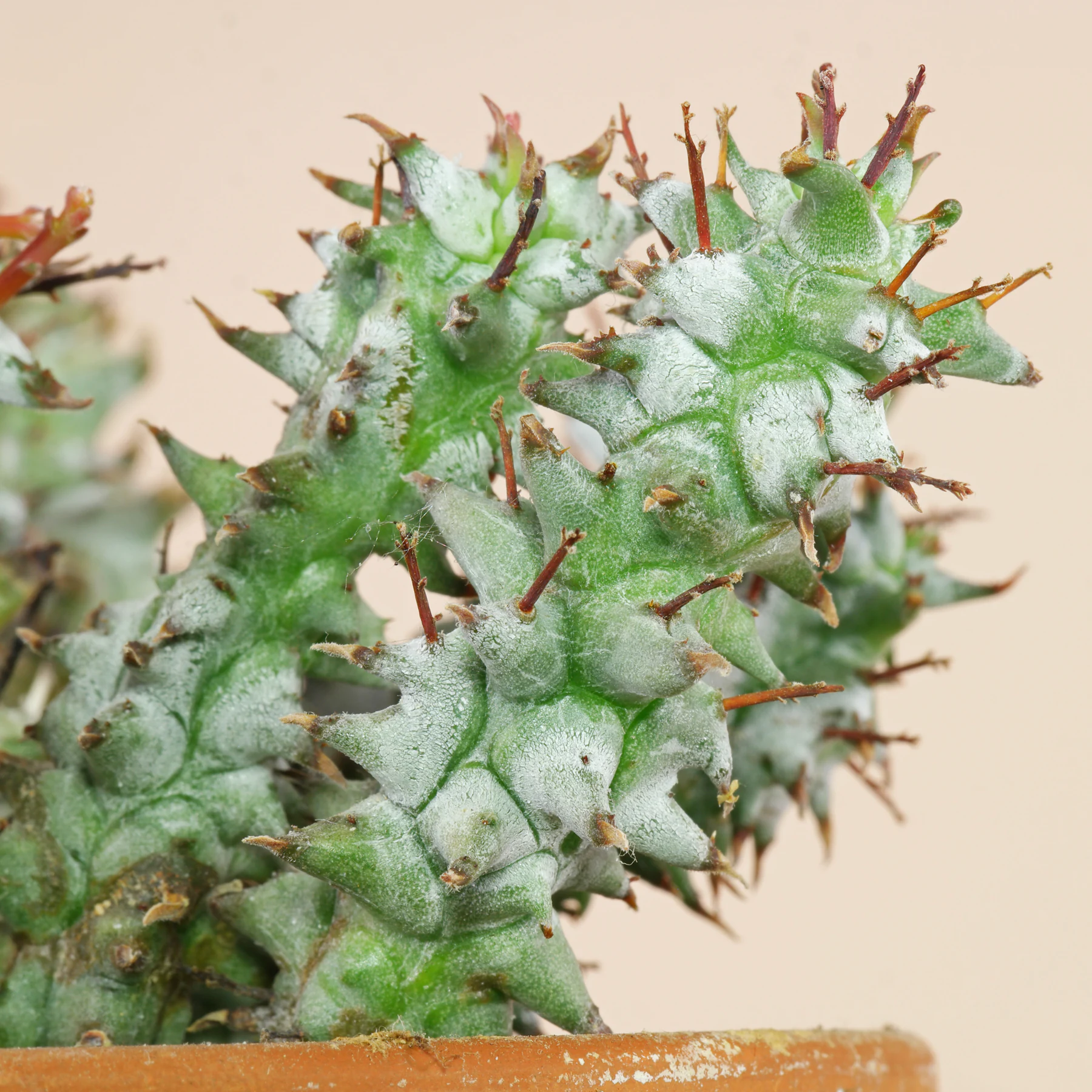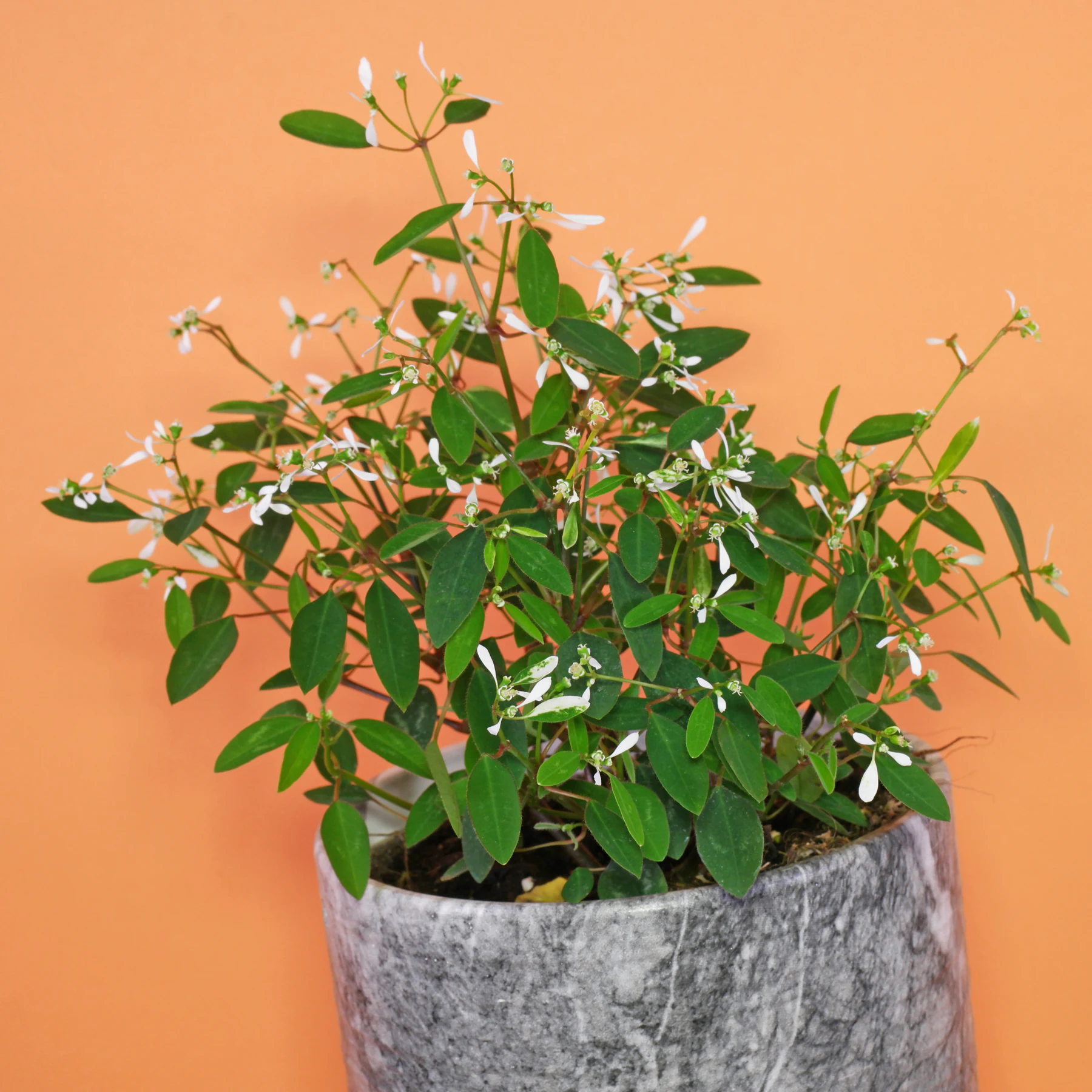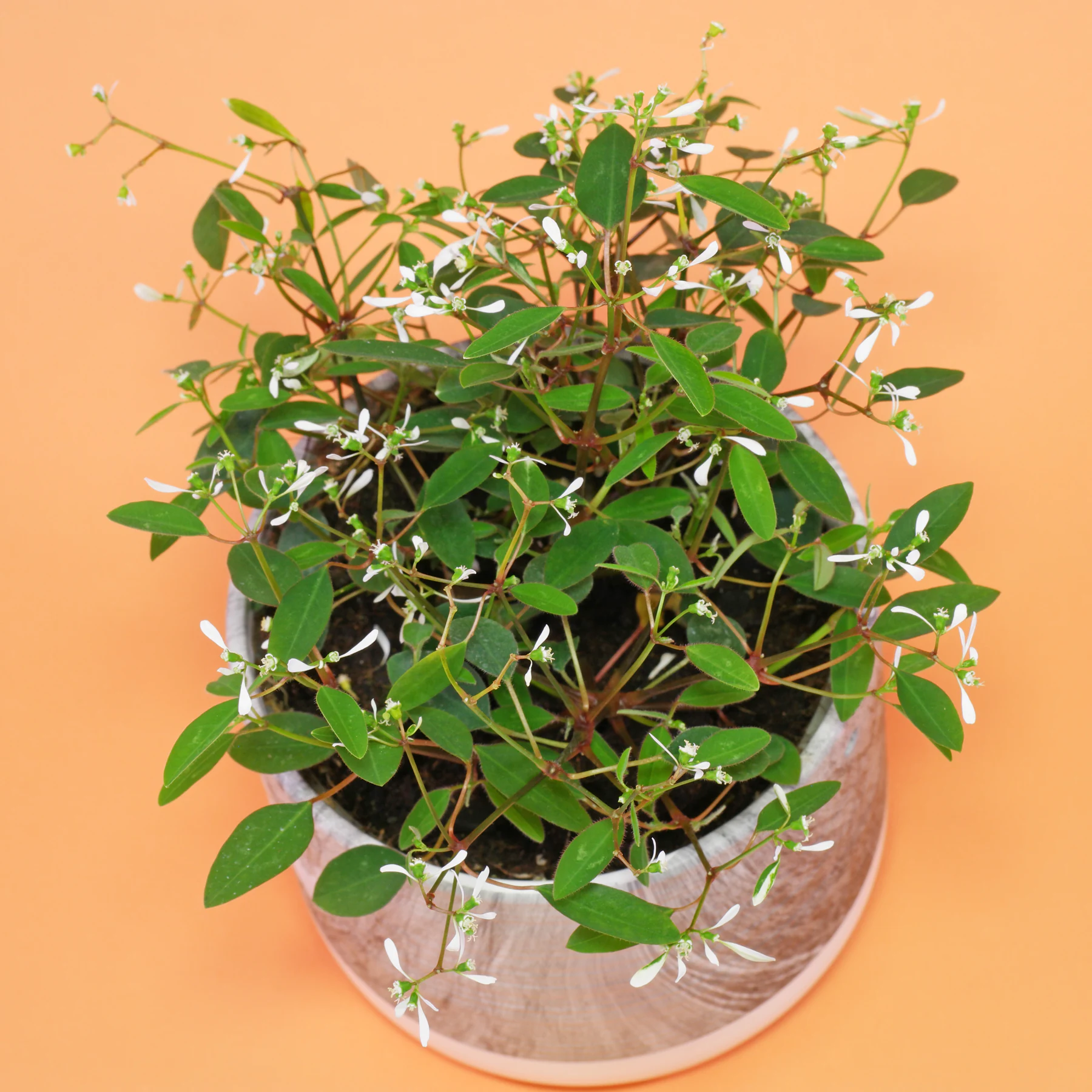Euphorbia horrida is native to South Africa and commonly known as the African milk barrel. It’s a somewhat variable plant with many varieties and forms. There are also cultivars with red spines and flowers available.

Euphorbia horrida – African milk barrel care
The African milk barrel does best if grown in a bright and sunny place throughout the year. A lightly shaded location will be tolerated. During the summer, it can be placed in the garden, but make sure that rainwater can easily flow out of the pot, as sitting in water will cause rot.
It grows well in a well-drained mineral potting substrate. I’m using a mix of potting soil, clay granulate, pumice, and bird sand in a 1:1:1:1 ratio.

From spring to fall, Euphorbia horrida var. striata can be deeply watered. Excess water flowing out of the pot’s hole must be removed after a few minutes before adding more water. Allow it to dry between waterings.
In spring and summer, a half-diluted cactus fertilizer can be given monthly. During fall/winter, there is no need to feed.
Euphorbia horrida var. striata can be cultivated at room temperature year-round and needs a minimum winter temperature of 10°C/50°F. The colder it is placed during this season, the less water is needed.
Euphorbia horrida propagation
Euphorbia horrida can be grown from seeds or cuttings.




